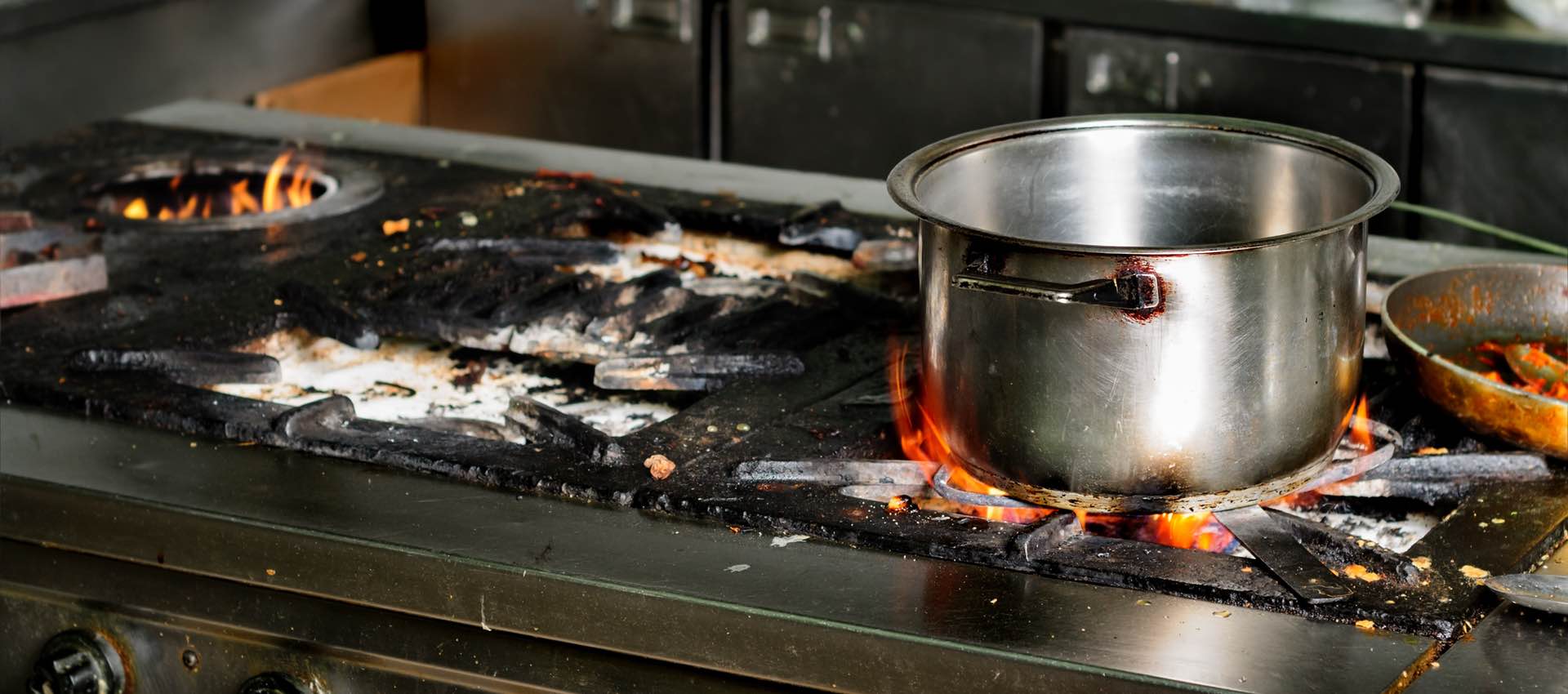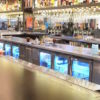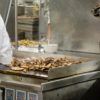Grease fire prevention is essential in a commercial kitchen operation. NFPA 96 and local fire codes require commercial kitchens to comply with specific safety guidelines – including proper maintenance for cooking appliances, fire suppression systems and exhaust systems.
How does a grease fire start?
A grease fire can occur when cooking oil becomes too hot. Liquid oil itself does not burn, rather the vapor from oil that has reached its boiling and vapor point ignites. When heating, oil first starts to boil, then starts smoking, before it ultimately catches on fire. The flash point of a flammable liquid material is the lowest temperature the material can form an ignitable mixture in air.
Most vegetable oils have a smoking point around 450°F, while animal fats like lard or goose fat will start smoking around 375°F. When cooking oil reaches its smoking point, its vapors can be ignited by an ignition source like an open flame or hot cooking surface. The situation becomes very dangerous if the fire spreads to the interior of the exhaust hood, which from there can cause it to easily travel to other parts of the restaurant or building.
If the worst happens and a grease fire does occur, do the following:
- If the grease fire is on the cooktop, turn the heat off. This will stop any new splashes of oil from heating to combustion point. Removing the flame source creates a good possibility that the fire will go out on its own.
- Since fire cannot exists without oxygen, cover the flames. If the fire is in a pot or skillet, covering it with a metal lid will help smother the flames (use a metal lid since glass will shatter). If one is not nearby, slide a wet towel or baking sheet over the flames front-to-back, keeping any oil from splashing.
- Spray the grease fire with a Class K fire extinguisher. If the fire has spread beyond the pot or skillet, the flames must be controlled before they overtake the kitchen equipment and spread to the exhaust hood. Standing several feet back from the flames, aim the fire extinguisher so that it sprays a mist. This limits the oil splash and creates a solid barrier between the extreme heat source and oxygen, limiting reignition.
- In the event the fire is out of control, activate the fire suppression system which will release a mist of chemicals to extinguish the fire. If the system does not activate, get out of the kitchen and manually activate it by pulling the switch on the wall.
- If the fire becomes out of control, don’t be a hero. Get out and call 911.
Most importantly, DO NOT:
- Use Water. This can cause the oil to splash and the fire to spread.
- Panic. Remember to stay calm and you can control the fire quickly and safely.
- Move the Pot. Trying to move the fire might splash burning oil, potentially making matters worse.
With all the relevant safety measures in place to prevent grease fires, it is still imperative that your kitchen staff know the steps to take to prevent a fire from occurring. Additionally, consistent vent hood cleaning and maintenance ensures the kitchen vent hood operates at its peak performance and provides a safe and clean cooking environment.




